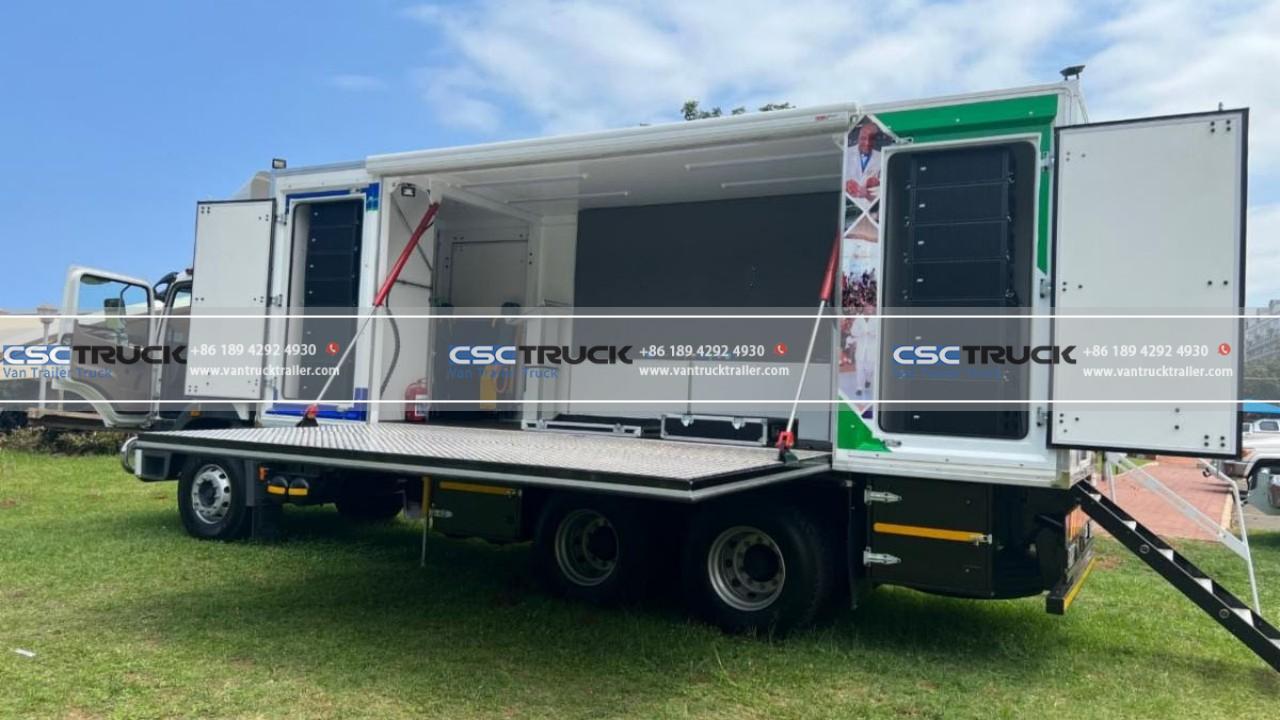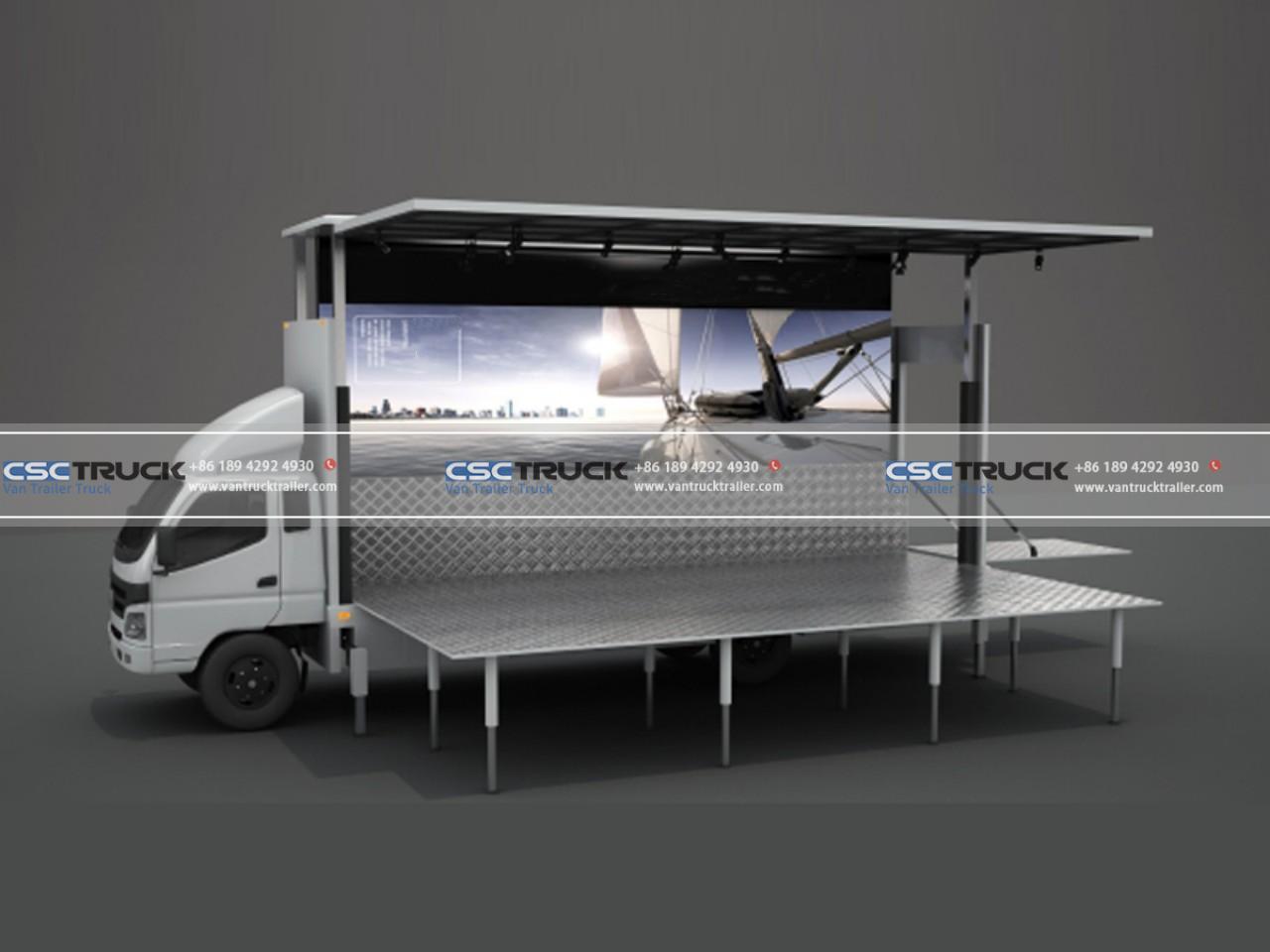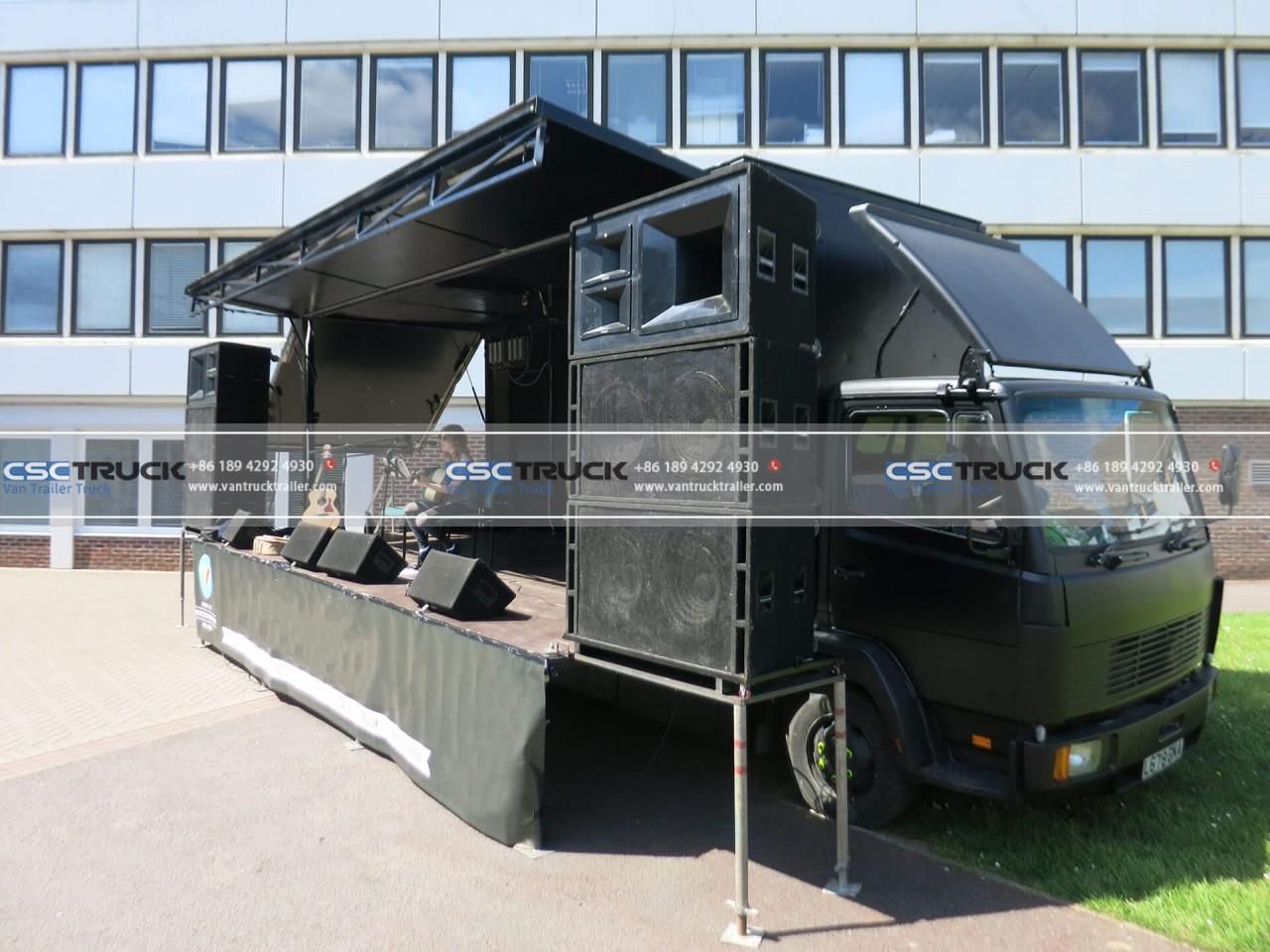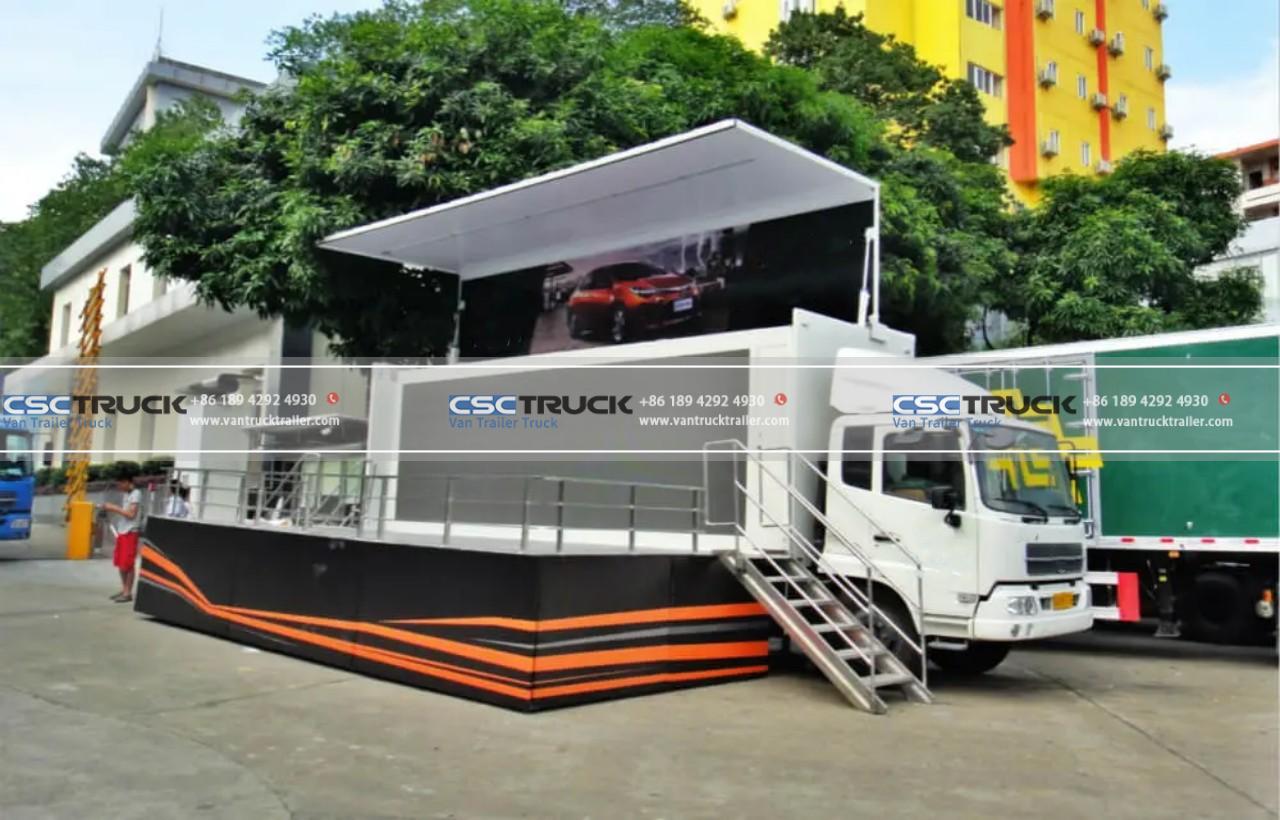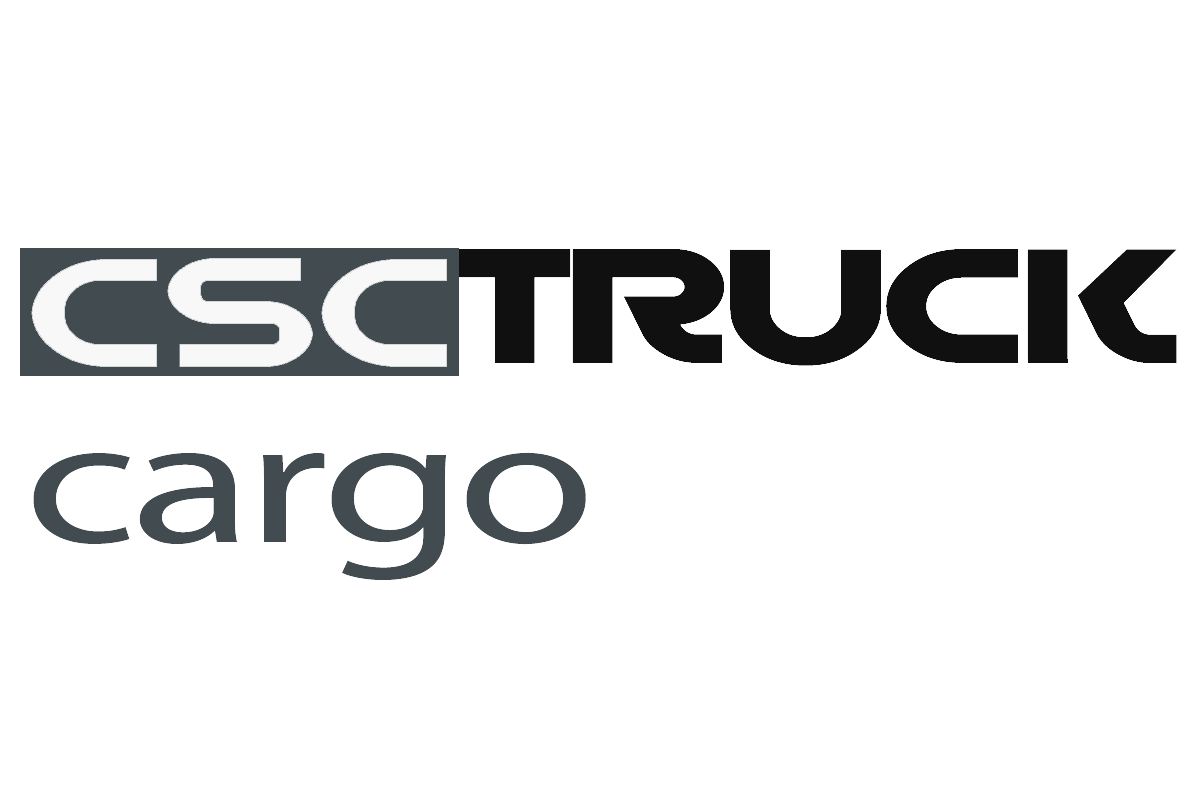Mobile stages have become an integral part of the entertainment industry, providing a versatile and efficient solution for staging events of all sizes. These portable platforms offer the flexibility to transform any location into a performance space, making them popular for concerts, festivals, corporate events, and more. A crucial element of a mobile stage is the truck setup that houses and supports the stage. In this article, we will explore the key components of a mobile stage truck setup and their importance in creating a successful event.
- Stage Platform: The stage platform is the centerpiece of any mobile stage truck setup. It provides a stable and safe surface for performers and equipment. The stage platform is typically constructed from sturdy materials such as aluminum or steel and designed to withstand heavy loads. It should also have non-slip surfaces and be equipped with appropriate safety features like handrails and guardrails.
- Roof System: A robust roof system is essential for protecting performers, equipment, and the audience from weather elements such as rain, wind, and sunlight. The roof system is often made of durable materials like aluminum or fiberglass and should be designed to handle various weather conditions. It may also incorporate features like rigging points for hanging lights, speakers, and other production equipment.
- Rigging: Rigging plays a critical role in the setup of a mobile stage truck. It involves the installation of equipment and structures that support lighting, sound systems, video screens, and other production elements. Rigging must be performed by experienced professionals to ensure the safety and stability of the setup. It involves securing equipment using trusses, motors, cables, and other rigging hardware.
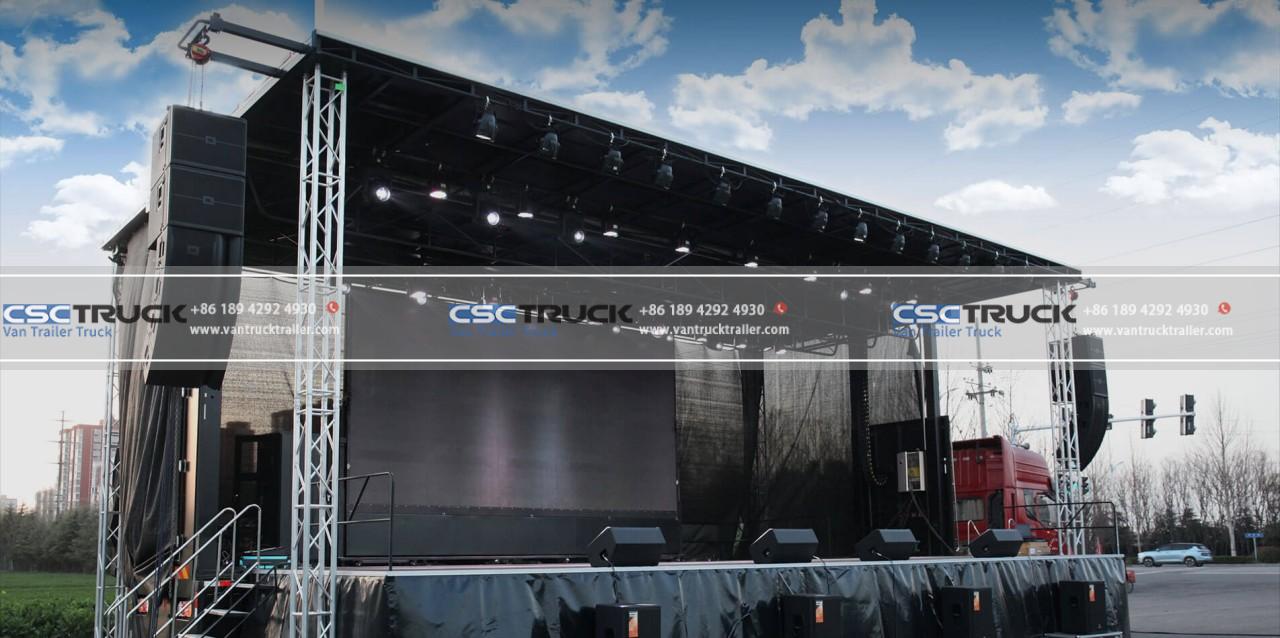
- Sound System: A high-quality sound system is crucial for delivering clear and powerful audio to the audience. It includes speakers, amplifiers, mixing consoles, microphones, and other audio equipment. The sound system should be strategically positioned and calibrated to ensure optimal coverage and sound quality throughout the venue. Additionally, it should be capable of accommodating the specific requirements of the event, whether it’s a small intimate gathering or a large-scale concert.
- Lighting System: Lighting plays a significant role in creating the ambiance and enhancing the visual experience of an event. A mobile stage truck setup should include a comprehensive lighting system comprising various types of lights, such as spotlights, floodlights, moving lights, and LED fixtures. These lights are typically mounted on trusses and controlled by a lighting console to create dynamic lighting effects and illuminate the stage area.
- Power Distribution: To power all the equipment and systems in a mobile stage truck setup, a reliable and efficient power distribution system is essential. This system should include generators, power distribution units (PDUs), cables, and connectors. The power distribution setup should be designed to handle the electrical demands of the event and ensure a stable power supply without any disruptions.
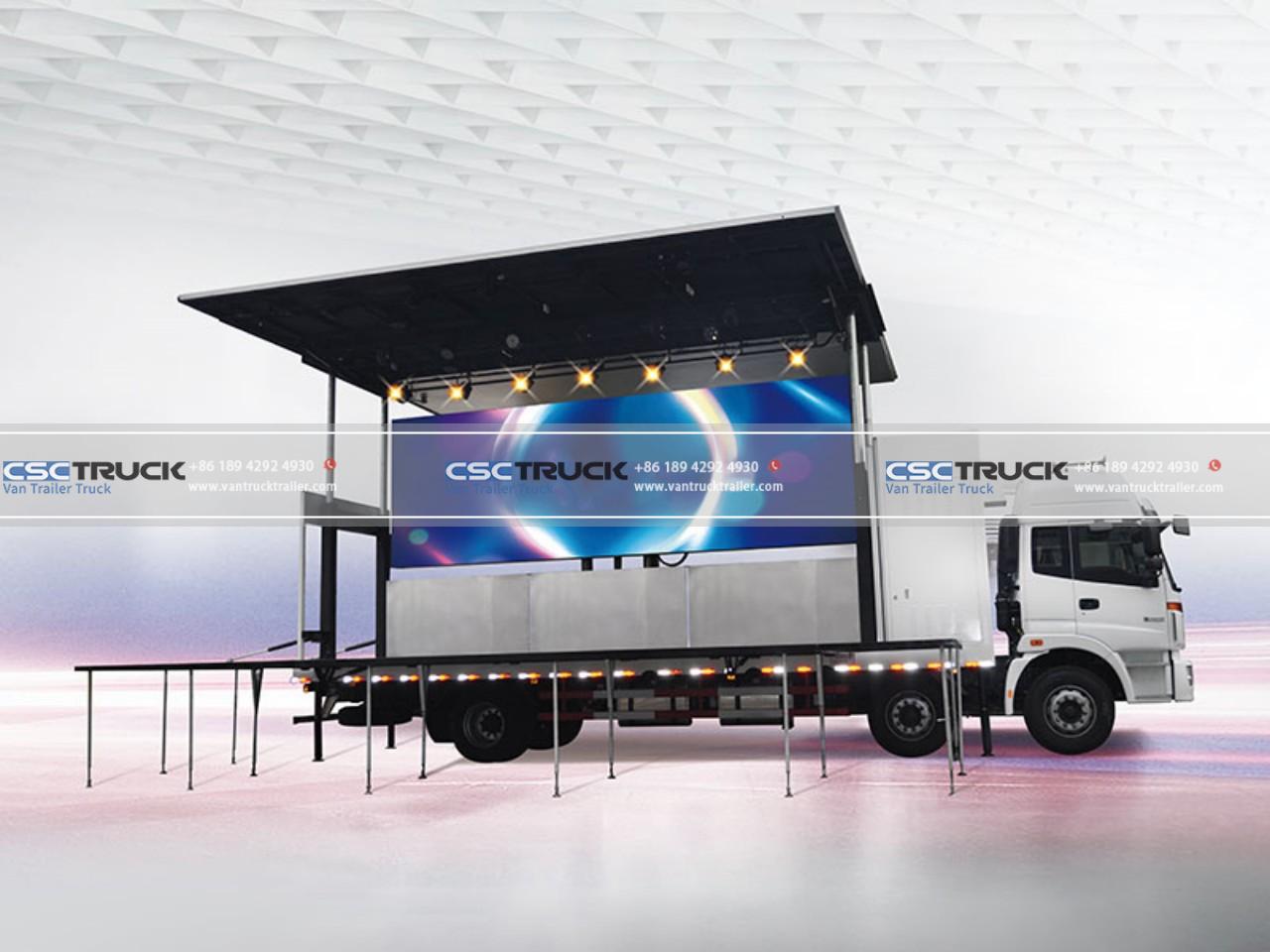
- Backstage Area: A mobile stage truck setup should also incorporate a functional backstage area to provide performers and crew members with space for preparation, rest, and storage. The backstage area typically includes dressing rooms, storage compartments, restrooms, and sometimes even a small kitchenette. It should be well-designed and equipped with amenities to meet the needs of the event participants.
- Safety Measures: Safety should be a top priority in any mobile stage truck setup. The setup should adhere to industry safety standards and regulations to protect performers, crew members, and the audience. This includes proper installation and maintenance of equipment, regular safety inspections, fire safety measures, emergency exits, and evacuation plans.
In conclusion, a mobile stage truck setup consists of several key components that work together to create a successful event. From the stage platform to the roof system, rigging, sound and lighting systems, power distribution, backstage area, and safety measures, each component plays a crucial role in ensuring a seamless and enjoyable experience for both performers and the audience.
